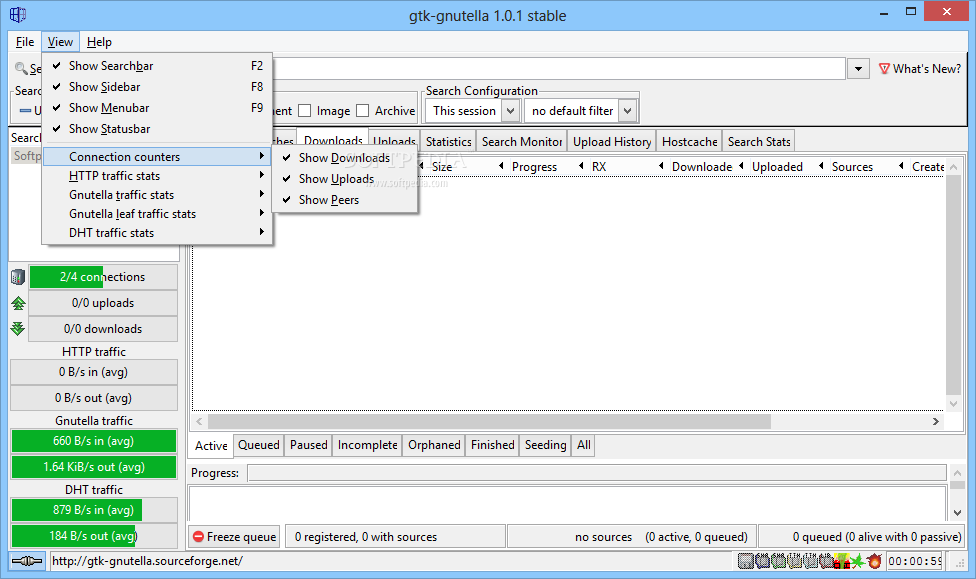
This allowed the network to grow in popularity. Instead of treating every user as client and server, some users were now treated as ultrapeers, routing search requests and responses for users connected to them. In early 2001, variations on the protocol (first implemented in proprietary and closed source clients) allowed an improvement in scalability. This growing surge in popularity revealed the limits of the initial protocol's scalability. The initial popularity of the network was spurred on by Napster's threatened legal demise in early 2001. The Gnutella network is a fully distributed alternative to such semi-centralized systems as FastTrack ( KaZaA) and the original Napster. This parallel development of different clients by different groups remains the modus operandi of Gnutella development today.Īmong the first independent Gnutella pioneers were Gene Kan and Spencer Kimball, who launched the first portal aimed to assemble the open-source community to work on Gnutella and also developed "GNUbile", one of the first open-source (GNU-GPL) programs to implement the Gnutella protocol. This did not stop Gnutella after a few days, the protocol had been reverse engineered, and compatible free and open source clones began to appear.

The next day, AOL stopped the availability of the program over legal concerns and restrained Nullsoft from doing any further work on the project.
#Gtk gnutella code
The source code was to be released later, under the GNU General Public License (GPL) however, the original developers never got the chance to accomplish this purpose. The event was prematurely announced on Slashdot, and thousands downloaded the program that day. On March 14, the program was made available for download on Nullsoft's servers. The first client (also called Gnutella) from which the network got its name was developed by Justin Frankel and Tom Pepper of Nullsoft in early 2000, soon after the company's acquisition by AOL.
#Gtk gnutella update
Please help update this article to reflect recent events or newly available information. Urn: Similar to a sha1 search, but the hash value is specified.This article needs to be updated. Typically this would be an ultrapeer that will allow a proxy download. The ip:port is the push proxy that the guid is connected to. The guid is the Gnutella ID of the computer that has the file of interest. Push: The format of this search is "push: guid:ip_address:port/path_to_file". Magnet: Search and download the magnet target. ForĮxample, "local:manual" will show all files you share with Regular expression may follow to filter the results. Local: Search results from the local host.
#Gtk gnutella zip
This could be a zip file, a movie, large JPEG, etc. Many portions of the GUI have a menu option, available from a rightĬlick, that will browser the specified computer. The above informations have been readapted from BitTorrent DHT protocol where more details can be found.īrowse: List shared files on the specified host.

Nodes that we know are good are given priority over nodes with unknown status. Nodes become bad when they fail to respond to multiple queries in a row.

After 15 minutes of inactivity, a node becomes questionable. A node is also good if it has ever responded to one of our queries and has sent us a query within the last 15 minutes. A good node is a node has responded to one of our queries within the last 15 minutes. It is important that each node's routing table must contain only known good nodes. Nodes from the routing table are returned in response to queries from other nodes. The nodes in the routing table are used as starting points for queries in the DHT. The opposite operation involving buckets is called MERGE.Įvery node maintains a routing table of known good nodes. In that case, the bucket is replaced by two new buckets each with half the range of the old bucket and the nodes from the old bucket are distributed among the two new ones.
#Gtk gnutella full
When a bucket is full of known good nodes, no more nodes may be added unless our own node ID falls within the range of the bucket. Each bucket can only hold K nodes, currently eight, before becoming "full". A bucket is a portion of the node ID space covered by the routing table.


 0 kommentar(er)
0 kommentar(er)
